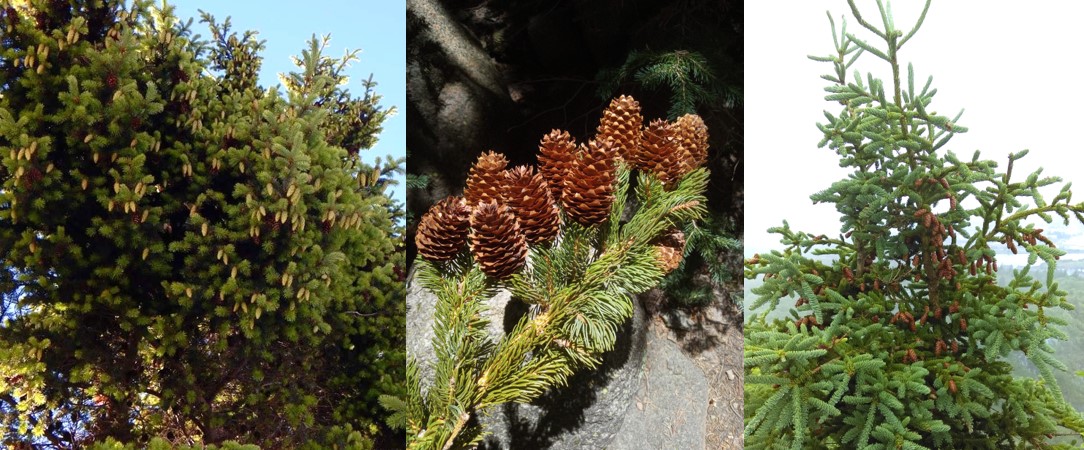 Changes in plant reproduction are affected by changes in climate and may create a ripple effect that permanently changes an ecosystem. (Image courtesy of Jalene LaMontagne)
Changes in plant reproduction are affected by changes in climate and may create a ripple effect that permanently changes an ecosystem. (Image courtesy of Jalene LaMontagne) Tipping points are a hot topic in ecology: How much can the shift in rainfall or temperature permanently change an ecosystem? The National Science Foundation’s Long-Term Network Office has tapped DePaul population ecologist Jalene LaMontagne to lead a group of researchers investigating tipping points in plant reproduction. They will synthesize data from Long Term Ecological Research sites ranging from Alaska down to New Mexico.
 Ecologist Jalene LaMontagne studies mast seeding in trees—a type of plant reproduction that varies annually and is largely synchronous within groups. (Image courtesy of Jalene LaMontagne)
Ecologist Jalene LaMontagne studies mast seeding in trees—a type of plant reproduction that varies annually and is largely synchronous within groups. (Image courtesy of Jalene LaMontagne)
“The geographic spread of this data, and being able to analyze it all at once, may allow us to come up with some general principles of biology that we really didn't understand before,” says LaMontagne, an associate professor in the College of Science and Health. “We will be looking at the patterns and trying to relate those, of course, to environmental change.”
LaMontagne studies mast seeding in trees—a type of plant reproduction that varies annually and is largely synchronous within groups. The dynamics of plant reproduction affect not only the structure of plant communities, but also the size of food sources for birds and mammals. She recently co-authored a study in the journal “
Nature Communications” about the role of a continental divide in seed production. Zooming out to see these larger patterns is a driving force in her research.
“There are many different species of animals that feed on these seeds as a resource," LaMontagne says. "Whatever we discover is changing in the trees is going to affect a variety of different animals from small mammals to birds to insects, and then whatever feed on them as well."
LaMontagne’s group seeks to build on work done in 2000 at the National Center for Ecological Analysis and Synthesis in Santa Barbara, California. Mathematical techniques for quantifying synchrony have improved dramatically in the past 20 years and this new research team is eager to apply these new approaches.
 Bala Chaudhary, assistant professor of environmental science, is part of the NSF-funded group conducting research. (DePaul University/Jeff Carrion)
Bala Chaudhary, assistant professor of environmental science, is part of the NSF-funded group conducting research. (DePaul University/Jeff Carrion)
“Some of these data sets are pretty exciting. By having that much data, we're also going to have a team using statistical approaches so we can find emerging patterns,” LaMontagne says.
DePaul ecologist Bala Chaudhary also will contribute to the project. She brings scientific expertise in community ecology and meta-analysis, as well as working with large groups to conduct and publish research.
“Meta-analysis in ecology has really matured in recent decades and become a powerful way to understand how life works across large spatial and temporal scales,” says Chaudhary, assistant professor of environmental science. “I’m looking forward to being a part of this new collaboration and contributing in the areas of data synthesis, group-based research and early career researcher mentorship.”
LaMontagne and her team were deliberate in assembling a group of scientists from diverse backgrounds.
“Part of this, too, is training the next generation of students and supporting people early in their careers,” LaMontagne says.
More information about the project is available online. The Plant Reproductive Drivers Synthesis Group is funded by the National Science Foundation under grant DEB #1545288, through the Long Term Ecological Research Network Office (LNO), National Center for Ecological Analysis and Synthesis (NCEAS), University of California, Santa Barbara.